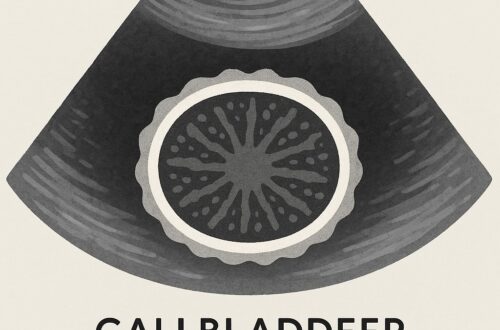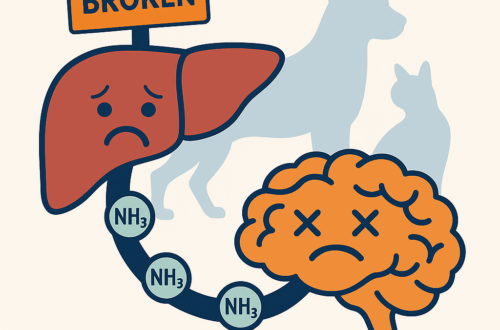The brain is a vital organ with many unique parts. Cerebrospinal fluid or CSF must be able to circulate appropriately. When flow of CSF is inadequate, serious and potentially life-threatening problems arise. This week I wanted to share information about hydrocephalus, a condition characterized by inappropriate accumulation of CSF in the brain. I hope you find the information insightful. Happy reading!

What is cerebrospinal fluid?
Cerebrospinal fluid serves as a cushion or shock absorber for the central nervous system (CNS). It’s also a chemical buffer and transport system for nutrients and metabolic waste products. A large volume of CSF is formed through a process called dialysis in special parts of the brain called the choroid plexuses. The structures are found in special cavities of the brain called ventricles. Cerebrospinal fluid is also produced by ultrafiltration of blood plasma by special cells called ependyma. The fluid is typically colorless with low cellularity, low protein content, and high concentrations of sodium, chloride, and magnesium.
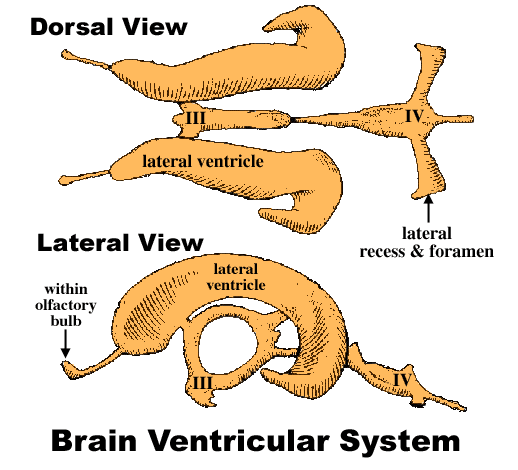
After production, CSF circulates from the choroid plexuses to the lateral ventricles. From there, the fluid flows through the interventricular foramina to the third ventricle and then through the cerebral aqueduct to the fourth ventricle. From this location, CSF flows down the central canal of the spinal cord or circulates in the subarachnoid space. Ultimately, the fluid flows into venous sinuses to join the systemic circulation. As CSF is continuously produced, any disruption of flow can be quite problematic.
What is hydrocephalus?
Hydrocephalus is the inappropriate accumulation of CSF in the ventricular system of the brain. The accumulation occurs because something has caused inadequate passage of fluid from the point of production to the point of absorption into systemic circulation. Hydrocephalus can be a congenital problem, or it can be acquired due to problems like brain tumors, inflammation, infection, and/or hemorrhage.
When too much cerebrospinal fluid accumulates in the ventricular system, the pressure inside the brain increases. Brain tissue is compressed. Neurological signs develop, some which can be life-threatening.
What does it look like?
Any dog or cat may develop hydrocephalus. The congenital form is obviously found in our younger patients, and some breeds are over-represented, including Boston terriers, cavalier King Charles spaniels, and chihuahuas.
The clinical signs of hydrocephalus are variable depending on the nature (congenital vs. acquired). Believe it or not, some patients have no clinical signs and lead normal healthy lives. Others manifest clinical signs that may include:
- Lethargy
- Abnormal behaviors
- Depression
- Abnormal eye position (called strabismus)
- Difficulty with house training & learning commands
- Vision deficits
- Ataxia (uncoordinated gait)
- Seizures
Perhaps one of the most characteristic features of congenital hydrocephalus is a rounded or dome-shaped skull. Furthermore, when one palpates the top of the head, one may feel a “soft spot” – in humans, this area called a fontanelle and in dogs we use the term molera. Watch the video below of a chihuahua with a characteristic dome-shaped skull.
How is it diagnosed?
Advanced imaging of the brain is required to definitively diagnosed hydrocephalus. Magnetic resonance imaging (MRI) provides excellent detail of brain tissue, ventricles, and cerebrospinal fluid. Given the detail provided by an MRI, this type of study may also identify the underlying cause of acquired hydrocephalus. Computed tomography (CT scan) may also be used to diagnose hydrocephalus, but may not be adequate to identify an underlying cause of acquired disease. Sonography may be used to visualize dilated ventricles when performed through a molera. Evaluation of CSF for abnormal cells and/or infectious agents may also be helpful. Families will likely find it helpful to consult with a board-certified veterinary neurologist to develop a logical and cost-effective diagnostic plan.
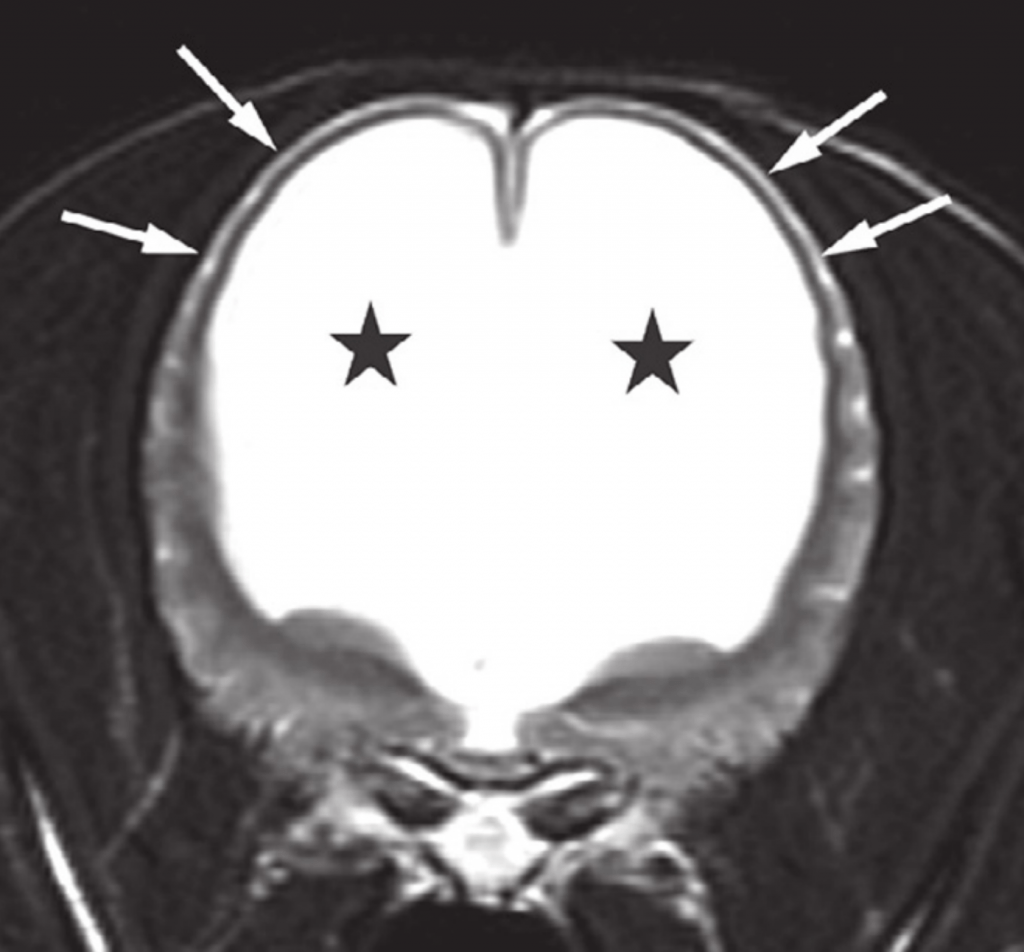
How is it treated?
Hydrocephalus may be treated both medically and surgically. Surgery is typically reserved for those patients who don’t adequately respond to medical management. The goals of medical therapy are two-fold: identify & eliminate the underlying cause (if possible) and reduce the formation of CSF. Several medications are available to help reduce CSF production, including:
- Corticosteroids (i.e.: prednisone, dexamethasone)
- Proton pump inhibitors (i..e. omeprazole/Prilosec OTC)
- Acetazolamide (a type of diuretic called a carbonic anhydrase inhibitor)
Patients with concurrent seizures may need anticonvulsant therapy as well.
When medical management fails to adequately alleviate clinical signs, surgery is indicated. During surgery, one end of a special tube (called a shunt) is placed into the ventricular system of the brain. The body of the tube tunnels under the skin along the neck and back until it enters and ends inside the abdominal cavity. This shunt is called a ventriculoperitoneal shunt. This surgery is best performed by either a board-certified veterinary neurologist or a board-certified veterinary surgeon. Potential complications of surgery include obstruction and/or infection of the shunt that cause recurrence of clinical signs.
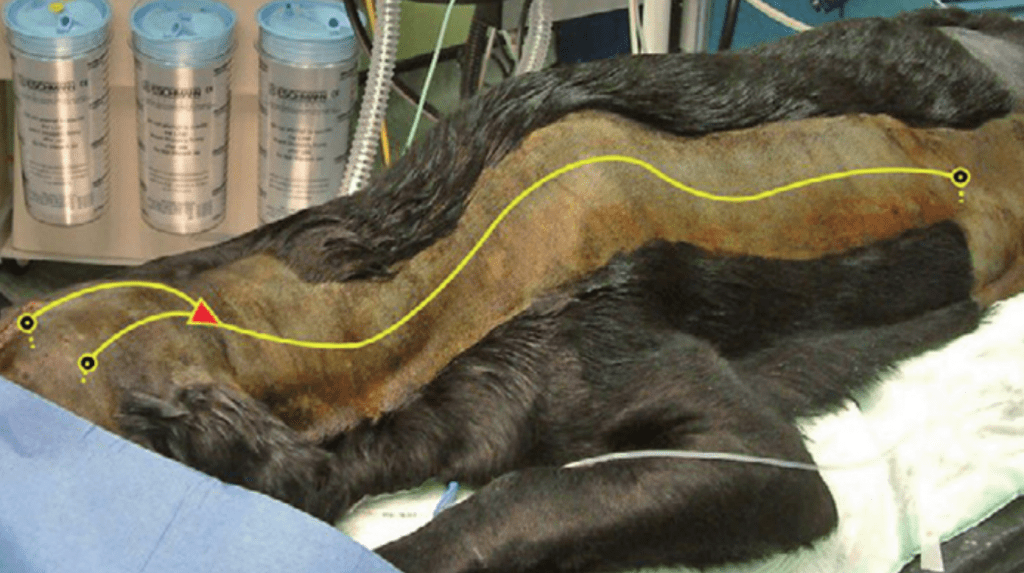
The prognosis for patients with hydrocephalus depends on the underlying cause and severity of clinical signs. Again, some patients have no clinical signs and lead high quality lives without major intervention. Unfortunately, severely affected patients may not respond adequately despite aggressive medical and surgical interventions.
The take-away message about hydrocephalus…
Hydrocephalus is the inadequate flow of cerebrospinal fluid through the ventricles of the brain. Some dogs and cats are born with this condition, while others acquire it as a results of brain tumors, infection, and/or inflammation. Both medical and surgical treatments are available.
To find a board-certified veterinary neurologist, please visit the American College of Veterinary Internal Medicine.
To find a board-certified veterinary surgeon, please visit the American College of Veterinary Surgeons.
Wishing you wet-nosed kisses,
CriticalCareDVM



